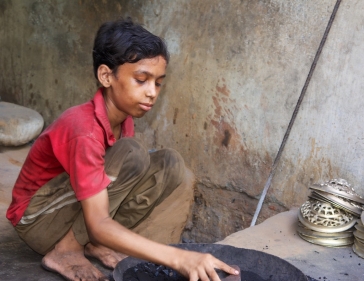
Child Labour is defined as having an element of economic compulsion associated with it and involves a time and energy commitment which affects children's ability to participate in leisure, play and educational activities. ILO Conventions 138 and 182 consider child labour as a matter of urgency and call for the effective and total abolition of child labour because a child is too young and the work in which he/she is engaged is detrimental to his/her health and development
Rights of children are the most violated human rights issues. Despite having proper laws in India, child labour is a widespread phenomenon in India. The Child Labour Act of India, Child Labour (Prohibition and Regulation) Act, 1986 prohibits the employment of children below 14 years of age in hazardous work (e.g factories and mines) and regulates the working conditions of children in other forms of employment, however,children still continue to be employed in complete disregard to the prevelant laws.
Child labour is a challenging issue not only in terms of the hazards and dangers that it poses to children but also because it denies children their basic rights. Child workers are powerless and less paid, and they suffer due to the burden of work.Nevertheless, child labour has become an inevitable part of the life of the poor as a dependent form of livelihood.
Child labour is an developmental issue and an increase in child labour increases income inequalities and adult employment and also decreases education, health and growth performance of children and wage rate of adult workers.
India is home to the largest number of child labourers. The 2001 Census estimates that the total number of child labourers aged 5-14, at 17 million. Child workers comprise 3 per cent of the total workforce in India. The growth of informal sector escalate the magnitude of child labour in India. Communities in remote areas or migrant communities where access to schools is poor, child labour can be expected to be more common. Gender roles are another factor; many poor parents tend to prefer that a boy child attends schools while girls are kept at home to help with household chores, childcare and family activities.
The states with the largest number of child workers are Uttar Pradesh, erstwhile Andhra Pradesh, Bihar and Madhya Pradesh.